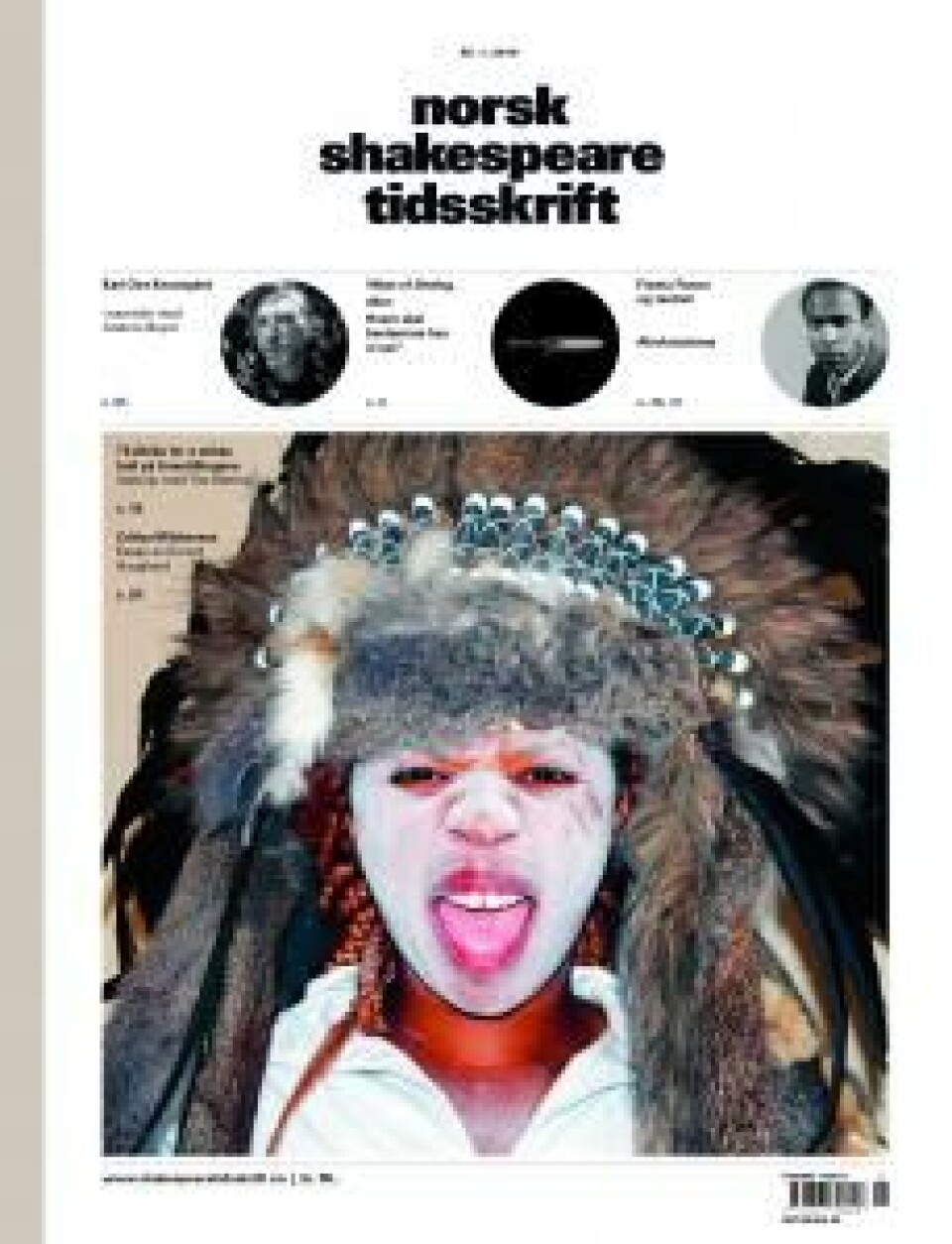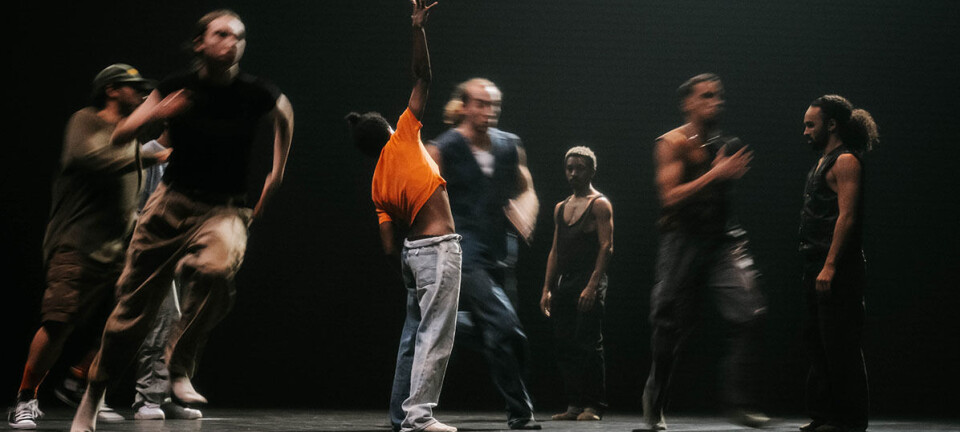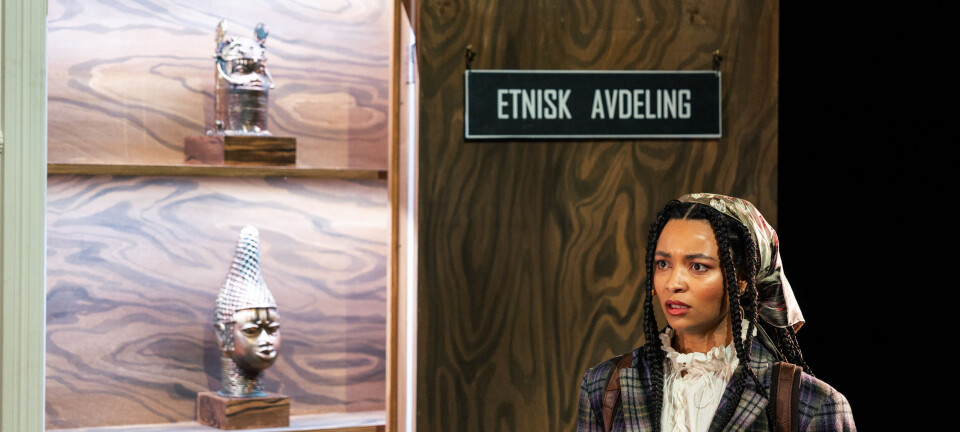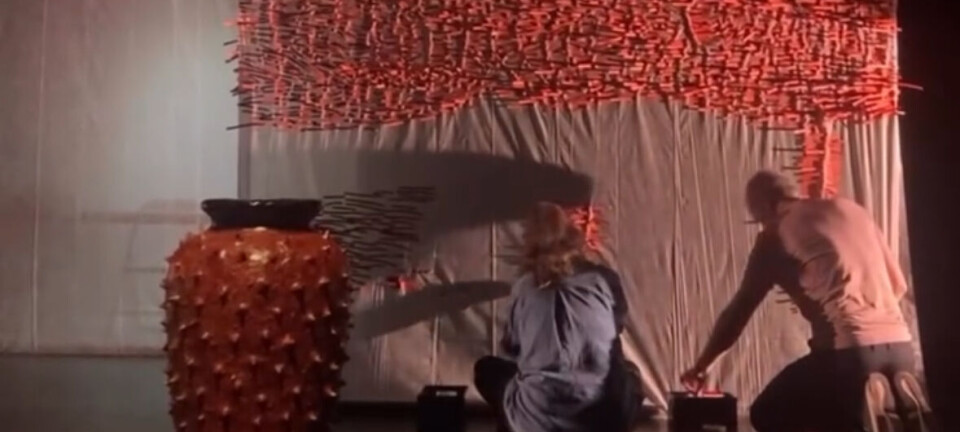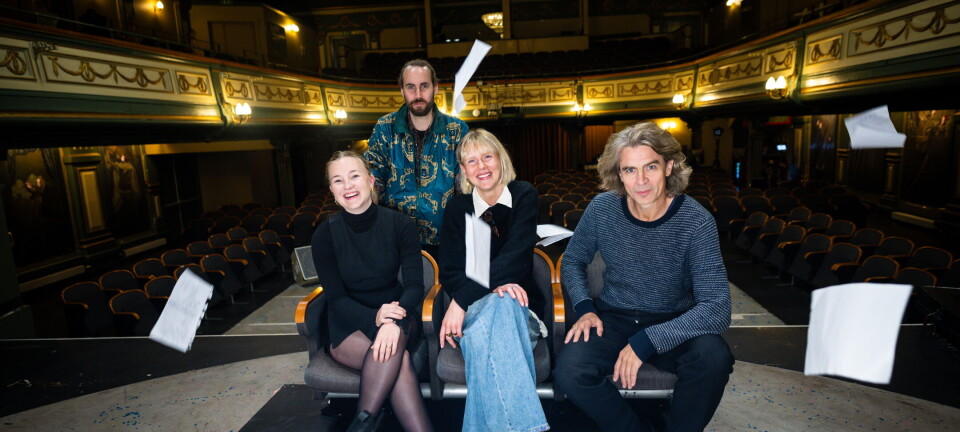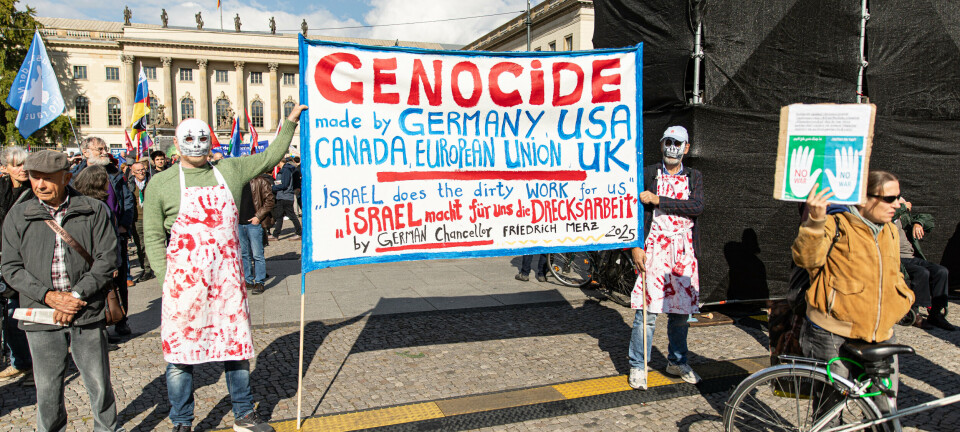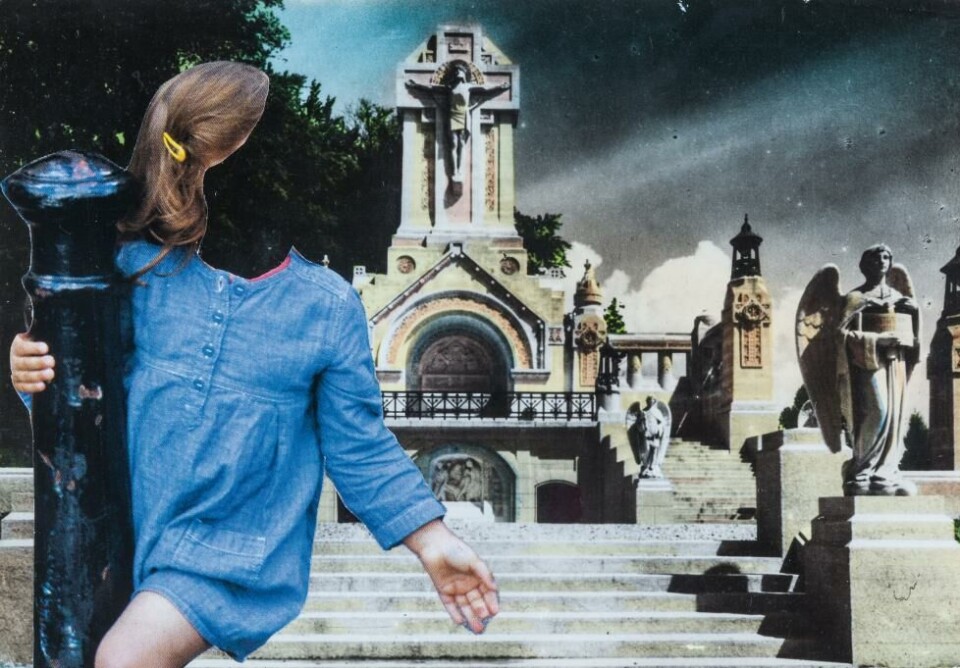
The institution and Metoo: A Morality Tale
#metoo is everywhere. #metoo-debates, #metoo-statements, #metoo-festivals, #metoo-performances: you name it, the theater delivers! But hashtag-dropping aside: How do art institutions really feel about #metoo? And how willing are they to risk change?
We publish the original English version as well as the Norwegian translation of Ilse Ghekiere’s text, which has been printed in the # 1 issue of Norsk Shakespearetidsskrift 2019.
After talking to several dance colleagues, they left me with the impression that ‘the institution has done nothing’ since #metoo began – and if they were doing something, it was to use the hashtag for mere self-promotion; hashtagging as a way of selling tickets or boosting the image of the institution itself. When reading that Oslo National Theater is presenting a #metoo-inspired Faust-production made by two male directors, or that Black Box Theatre is framing Florentina Holzinger’s and Ofelia Jarl Ortega’s work as important in the wake of #metoo because it ‘challenges our gaze and women’s objectification’, I can understand my colleagues’ skepticism. Linking the metoo-hashtag to performances that echo feminist aesthetics or ideas can be seen as an easy way for programmers to qualify their institutions as culturally sensitive.
This is not to say that international theaters are failing to take action. On the contrary: In Norway, the #notinourhouse-statement collectively written by Black Box Teater, Teaterhuset Avant Garden and BIT Teatergarasjen is an example of institutions joining forces in a promise to create structural change. In great detail the statement describes an ambitious plan. Better routines and procedures will be established, paragraphs about harassment will be added to contracts, staff members will be trained to deal better with possible complaints – even the development of a handbook on awareness-raising and prevention is mentioned.
Although these gestures show potential, they are the absolute least we should expect from theaters already polishing up their programming with the glow-and-shine of feminism, queer-culture and decolonization. But showing potential is not enough. If a change in policy is actually made, it still puts the brunt of the responsibility on the victim to file a complaint. Meanwhile institutions assume that they are safe spaces where people happily share their personal experiences and opinions. Or as Sara Ahmed observed from her interviews with diversity practitioners in the academic world: “Many institutions have what I would call complaint pride, which is rather like diversity pride: about how an organisation would like to appear. Complaint pride takes the form of statements about wanting to learn from complaints; complaint pride is expressed as being willing to listen. I wonder if a fantasy of an open ear might operate in a similar way to a fantasy of an open door, as if anyone can get in when in fact they cannot.” *
Sara Ahmed’s writing** reads as a prophecy for much of the activist work that resulted from the #metoo-movement in international performing arts communities. Artists like me, who have engaged in conversations with theater directors, programmers and gatekeepers, and have taken on roles as ad hoc diversity workers, will share Ahmed’s observation that even if you are invited by an institution to transform the institution, it does not mean the institution is willing to be transformed.
As an activist, dancer and researcher, I am interested in the frictions caused by activist work. Having engaged in several conversation with theaters in Norway as well as in Belgium, France and New York, I want to show how arguments and ways of thinking reoccur during these conversations and how it relates to the historical relationship between the art institution, the artists and the public. Keeping Ahmed’s ‘fantasy of the open door’ in mind, here are some examples: You might be invited by the supposedly supportive institution to engage in an open conversation about structural change, but end up finding yourself, again, explaining and defending the cause. You might participate in a panel discussion on the topic of harassment, but will hear afterwards that the director took offense at your approach. When you reach out to an institution, asking critical questions about their position or why they continue to provide space to certain artists, you might be reminded that your language is inappropriate, that the matter is none of your business or that your activist critique ‘disturbs the immersive experience of the audience’.
What is it about activist language that is so unwelcome? In a statement written by Engagement***, an artist-lead movement tackling sexism, sexual harassment and abuse of power in the Belgian arts, institutions were invited to sign a paragraph listing very concrete actions. The sentences “We might not have always been aware of the widespread issues of power abuse and sexual harassment. For this lack of attention and care, we apologize.” received noticeable critique. A director of an established theater said that many staff-members found the notion of apology “too moralizing”, because it reminded them of the catholic church and how they dealt with guilt and punishment back in their youth.
Apparently, being invited to consider one’s responsibility as a way of dealing with harmful behaviour touches a sensitive spot. A recurring claim is that morality is something to resist or be careful of. Historically, the progressives have always positioned themselves against the morals of the conservatives. But when ‘fighting conservative morality’ turns into ‘fighting all morality’, institutional privilege is enabled in an ingenious way. Taking into consideration how many theaters profile themselves as historically progressive spaces, this attitude is twisted to say the least.
When reading mission statements from international performing arts venues, we are often reminded of the theater’s wish to challenge and expand the view of its audience, offering art that embraces nuance and contradiction in a world that becomes more and more… (fill in the gap). Such messages are at best idealized promises, at worst a condescending spiel, especially if in practice the wish to challenge is only a one-way street. You’d be surprised how often, in conversations about #metoo, the importance of nuance and contradiction are used as arguments for not stirring up the status quo. Suddenly we have to be ‘careful with these type of judgments’, the discussion is ‘a threat to artistic freedom and democracy’, hence the underlying belief that ‘this is the price we pay for great art’.
The more I have been involved in these types of conversations, the more I become aware of how discussions – which should be moments of exchange – turn into opportunities to destabilize and confuse. Art discourse is typically a place for this. For instance, you’ll find yourself listening to someone revving up about the nature of postmodernism: ‘there is no truth’, ‘who’s to say what’s real’, not to mention, ‘identity is but a construct’. Or feminist discourse will be turned against you: “O, but your thinking is so binary. Haven’t you read Judith Butler”. Or a doomsday-scenario will be created in which all the work of the 70’s sexual liberation movement was for nothing, and that now we are heading into an age of puritanism (from what I have seen on stages over the last year, I think it is safe to say that the image of the nude is far from being in danger).
I don’t know the number of times people have told me raising these questions is ‘polarizing’. But these types of displacement also happen on an interpersonal level. When some dance colleagues refused to take part in a program that gave space to an artist with a reputation for abuse of power, they were told by the director of the venue that now they were abusing their power. Another example of displacement was when an influential programmer who was encouraged to reconsider her support for an artist about whom numerous #metoo-testimonies had surfaced, simply claimed to ‘feel’ that she wasn’t a person in power.
These are just a few examples of ridiculous ways of flipping the narrative. It shows an unwillingness to come to terms with one’s status of power, while obfuscating the actual feelings and thoughts one might have about the movement; which is that #metoo is populist, annoying and ‘too demanding’. As long as sexual harassment can be put in the category of employees’ safety hazards together with fire regulations, the institution is on board. Once you imply complicity in maintaining structures of power and abuse, you are considered an irritation.
Call-out culture and activist strategies that name and shame are a direct threat to the art institution, and its authority and reputation. One could see the theater as an embodiment of historically layered power games, with influential people defining what art is and what it isn’t; who is an artist and who is not. As these decisions are entirely relative and context-dependent, the art institution is a place where a lack of transparency reigns. Meanwhile, both the art and theater world are filled with past and present stories about people reveling in their power. The profile of the genius artist is not just a construct limited to them, but a practice of toxic behaviours that the art institution has celebrated and continues to support. In other words, gaining status by practicing control and using manipulation is not phenomena unique to the genius artist. How could a director of a theater for instance, be genuinely concerned about the #metoo-conversation, while the community knows about situations in which this same director brags about their power to make or break artist’s careers? Or how could a director sincerely condemn sexual harassment if they have invited artists to their own hotel rooms in the past?
#metoo can be understood as ‘a historical reckoning’; it questions all of us. By controversially calling out powerful individuals, the movement has shed light on what we all knew but didn’t dare say. In turn, questions about the role of the institution and the accountability of individuals have been rightfully raised. However, this is precisely where conversations become difficult, as few of us want to engage with the notion of responsibility.
To me the question of responsibility is rather straightforward. If we’re talking about repeated harassment or abuse in a professional or educational context where there is a clear power difference between individuals, and it concerns a collective complaint or accusation – then measures need to be taken. In practice, this means that the individual is made aware of the complaint against them, invited to consider their behaviour and asked to apologize.
In a sincere attempt to make structural change happen, we also need to talk about space. Giving space comes down to the long process of reconfiguration of one’s abusive position of power. It starts with accepting and listening to critical feedback, sitting with the discomfort and start the patient process of restorative justice and shared healing.
Despite being a solution-oriented way of looking at individual cases, this is met with tremendous opposition. The notion of asking for apology is not only perceived as moralizing, but also as an expression of some perverse desire to revel in someone’s admittance of guilt. Instead of considering what ‘giving space’ could mean, it is quickly shot down as being synonymous with ‘punishment’. The choice to use words like ‘punishment’, ‘judgement’ and ‘complicity’, and the immediate reflex to link these words to a singular meaning defined by law is, simply put, revealing. If ‘giving less space’ is seen as a severe punishment of an artist, what does this say about art? Instead of sitting with the idea of what it means to give someone space, the concern is immediately about censorship and how long the ‘punishment’ is supposed to last. It’s as if, for the institution, a ‘punishment’ for the artist is also a punishment for them.
These type of reactions makes me think about Kate Manne’s term himpathy***; the innate tendency to show sympathy for powerful men, often by shaping a narrative of victimhood around them. Proposing that measures should be taken is often seen as revenge or a lack of sympathy or empathy. Here as well, we face a trick of moral reversal; sympathy and empathy are used to make you feel (morally) bad about wanting to fight a symptom of systemic injustice. In the same way, a ‘second chance’ rhetoric will often be thrown into the discussion, because ‘everyone deserves a second chance’. Most people will probably agree with this statement. However, this second chance-culture is touching on some darker realities about fairness and justice. As in: Privileged individuals are more frequently and easily given second chances than less privileged people (who often don’t even get a chance in the first place). Translating this into artistic practices makes me think of the artists who don’t receive any institutional support; all those who missed the train; all the aesthetics or formats the institution doesn’t see as valuable or worth investing in.
The institution ends up holding a kind of non-position: On the one hand proclaiming a desire for structural change, while on the other upholding the belief that such change must never impact individual people. Alas, you cannot have your cake and eat it too. This hypocrisy is nothing less than a failure of professional integrity. When theater directors say it’s not their job to judge abusive artists, they are ignoring the obvious role and power inherent in their position. The practice of curating has never been about being fair and every program is a selection based on judgement. So to claim that taking action would be the same as censorship is besides the point. In spite of all this talk about art, what it really is about is people. Of course in art, this division is never that clear cut. The art and the artist are separate entities – and at the same time they are also not.
Institutions are made up of people. People who want to change and don’t want to change. From what I have observed, social movements like #metoo rely entirely on allies: People in power who take critique seriously and dare to risk change by taking a stance. This article does not aim to arrive at a generalizing conclusion. That said, maybe questioning the institution is a way of questioning dominance at large; as if questioning ‘the institution’ is the same as questioning white/western/colonial/capitalist/heteronormative/patriarchal history. And if my so-called ‘polarizing’ position can make the ridiculous image of the power-lusty genius artist, and the institutions cheering them on, crumble even just a little bit, then call me a moralist all you like.
Footnotes:
* Sara Ahmed, https://feministkilljoys.com/2017/11/10/complaint-as-diversity-work/
** Sara Ahmed, Living A Feminist Life (2017); https://feministkilljoys.com/
4 https://www.nytimes.com/2018/09/26/opinion/brett-kavanaugh-hearing-himpathy.html

